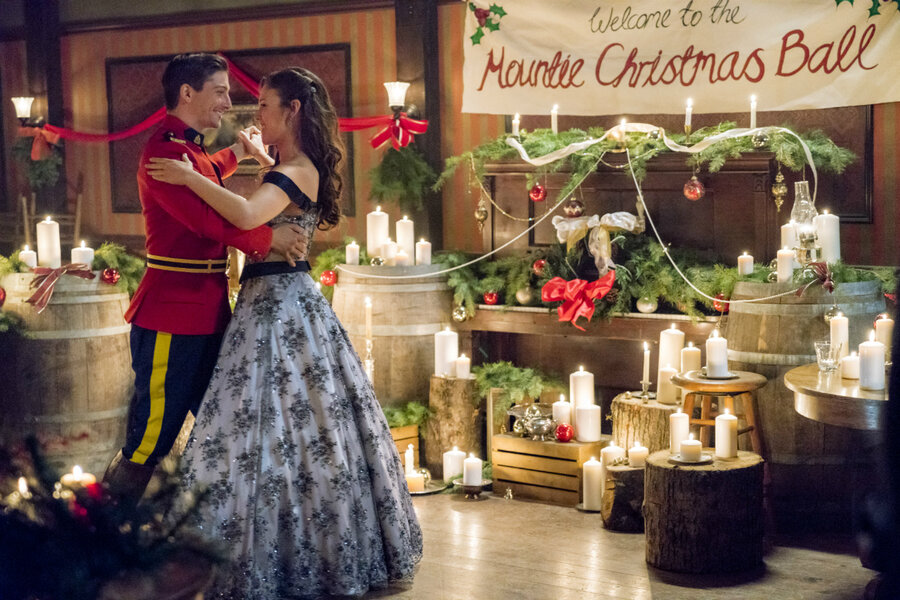In these dark times, Hallmark Channel's golden glow beckons
Loading...
Darren Triplow has an unusual occupation. He flies helicopters in Rwanda to help conservationists watch for poachers illegally hunting black rhinos. To unwind when he’s at his home base in Washington, D.C., he’ll sometimes settle in front of the television. But it’s not the weekend game that he turns on. It’s the Hallmark Channel.
“I like the content. The shows are family-friendly – it’s not riddled with violence like you see in a lot of shows on these days. And there’s usually always a happy ending to it,” says Mr. Triplow, who has been a fan of Hallmark’s programming for the past couple of years and likes to watch with his wife and two children. “It’s just easy to watch and it’s relaxing, which is kinda hard to find on TV these days.”
And Triplow is not that unique in his TV-watching habits. In 2016, Hallmark saw a 10 percent increase in total viewership and a 26 percent increase among viewers 18-49. During the 2016 election week, it ranked No. 4 among primetime cable networks – even ranking above MSNBC.
Television has long served as a form of escape. For many viewers, with its 24/7 feed of TV miniseries and movies full of white picket fences and wholesome family values, the Hallmark Channel has become a growing safe haven for those weary of the violence, conflict, and uncertainty churned out by both news broadcasts and apocalyptic-themed TV dramas.
Shows like "The Walking Dead" and the happy content from Hallmark are like two sides of the same coin, says Wheeler Winston Dixon, Ryan professor of film studies at University of Nebraska – Lincoln. Both offer appealing counter-realities.
“Some people feel that a return to the past is possible, that we can get through this. Other people feel that apocalyptic times will solve all their problems by just erasing everything,” says Professor Dixon.
Younger generations may be drawn by the fact that on the Hallmark Channel, homeownership, solid careers, and relationships are easy to come by.
Amy Jamison, a college professor in Michigan and a longtime viewer, appreciates Hallmark’s guaranteed happy ending that offers her a chance to decompress after a long day.
“As soon as I get home … I just want to settle in for a good movie,” she says, adding that “the predictable, happy ending is something that’s comforting, especially when you’ve got a lot going on."
Of course, Professor Jamison admits Hallmark may not be for everyone. "I don’t hide the fact that I watch it, but sometimes I’m a bit hesitant because it’s not everybody’s cup of tea,” she says.
The popularity of Hallmark movies are following a familiar cyclical pop culture pattern, notes Cathy Perron, an associate professor in the film and television program at Boston University’s College of Communication. She points to similarities in the era of western movies. Westerns were considered quite violent for the time, and while they were wildly popular in the 1930s through the 1950s, they were soon followed by a counter-trend of family-oriented dramas, such as “I Love Lucy” and “Leave it to Beaver."
“[H]istorically, when there have been some difficult times, many viewers tend to migrate toward content that represents … a more gentle time,” Professor Perron says. “If you look at what the television networks ... have for new programs, they’re all very much either crime or war-centric. And when they introduce something like ‘This is Us’ or ‘Modern Family’ … people gravitate toward that….”
Just like the family dramas of the 1950s, the Hallmark Channel and other feel-good shows like “This is Us” are bringing back the idea of TV content for all, where the whole family can watch and share in the experience, says Perron.
Austin Romo, a recent college graduate and flight attendant, says he most enjoys watching Hallmark movies with his grandmother and siblings. “She gets enjoyment and pleasure from spending time with her grandkids … and we all share a love for and enjoyment of watching the shows with her,” he says, adding that while he didn’t initially expect to like the saccharine predictability of Hallmark scripts, he has grown to appreciate its stories.
While many may roll their eyes at the mention of Hallmark, wait a beat and people may just admit that Hallmark is exactly what they need.
“It’s not so much burying your head in the sand, it’s just taking a break from what is assaulting you on a daily basis,” Perron says.
For Tanja Moneyhun, a pet groomer from Alton, Ill., and a dedicated Christmastime Hallmark viewer, the intensity of the news overwhelms her and she looks forward to Christmas, when she can take a break with the warm, calm content. “It’s almost like a hug,” she says.
Hallmark is also attempting to keep viewers hooked over multiple installments by recently introducing miniseries such as “When Calls the Heart" and "Cedar Cove." To meet the increased demand, Hallmark has announced 33 new Christmas movies and launched a new network, Hallmark Drama, this past October, to join the Hallmark Channel and Hallmark Movies & Mysteries. But don’t expect any hard-hitting topics. The channel will likely stay true to its brand.
“Hallmark is zigging when everyone else is zagging,” says Perron.






